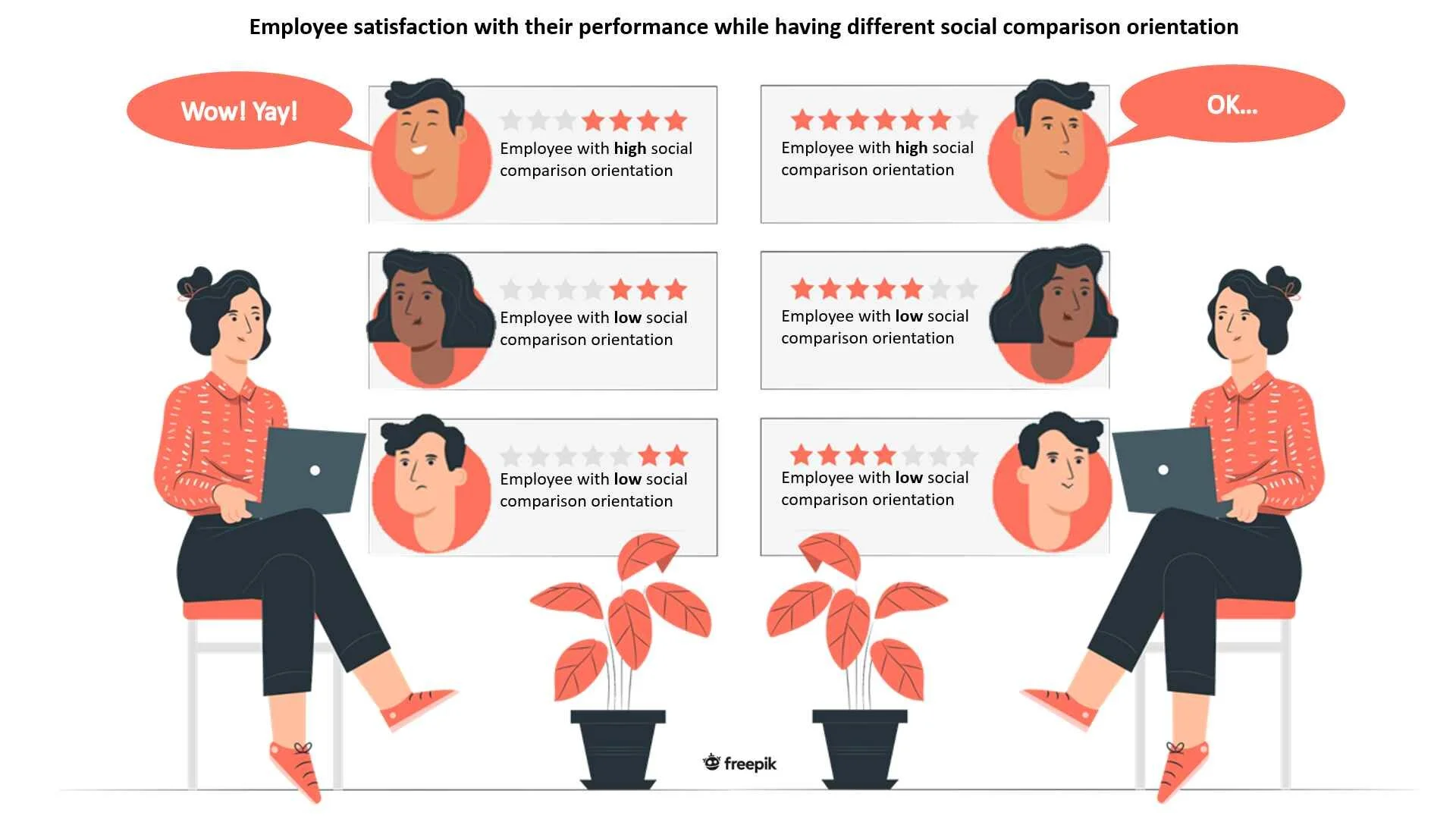Digest 21. Simply giving high ratings to employees won’t make them more satisfied
If it is true that a happy worker is a productive worker, organizations should truly be concerned with the job satisfaction of their workforce. A considerable part of employees’ satisfaction is their satisfaction with their own performance, which is clearly affected by the feedback and evaluations received from their managers.
To assess performance and feed such appraisal back to employees, many organizations use relative performance evaluation systems. These consist of forced rankings which compare employees’ performance relative to others and need to be plotted along a distribution curve (e.g., curve-based evaluations). In such evaluations, three pieces of information are given to each employee: 1) his/her absolute performance evaluation (employee performance), 2) the average of the absolute performance evaluations of all employees, and 3) his/her relative performance evaluation (in comparison to others).
In relative performance evaluation systems, managers can use stricter (vs. laxer) evaluation criteria, resulting in lower (vs. higher) absolute performance evaluations and lower (vs. higher) average of the absolute performance feedback; however, the use of such stricter/laxer criteria will not affect employees’ relative performance. It is often assumed that laxer evaluations, which generate higher absolute performance evaluations, might lead to greater employee satisfaction with performance; yet, this is not necessarily the case all the time. In fact, employees’ satisfaction may be lower when they receive higher absolute performance evaluations when comparative performance evaluation systems are used. Let’s see why.
Why sometimes higher absolute performance evaluations result in lower employee satisfaction with performance?
The answer may lay in the individual’s social comparison orientation. This describes the personal tendency to compare oneself with others and determines the extent to which we will compare our own performance to the performance of others to assess our self-competence (for more insights on the effects of social comparison in feedback provision see Digest 14).
To verify the role of social comparison orientation within relative performance evaluation systems, Luffarelli, Gonçalves, and Stamatogiannakis (2016) conducted an initial study with appraisers (managers) and a series of experiments on appraisees (employees). They showed that, generally speaking, both appraisers and appraisees believe that higher absolute performance evaluations result in greater employee satisfaction with performance. However, they also found that higher absolute performance feedback can lead to lower satisfaction, and this depends on the employee’s social comparison orientation. Specifically:
Employees with low (vs. high) social comparison orientation are more satisfied with their performance when they receive high (vs. low) absolute performance evaluations.
Employees with high social comparison orientation feel more competent when everyone’s absolute performance evaluations – including their own – is lower. Consequently, they will be more satisfied with their performance. Indeed, these employees use the performance of others as a reference point to judge their own and, therefore, care more about where they stand in comparison to others – the more favorable the comparison, the more competent and satisfied they will be. In a group evaluated with strict criteria, one stands out more with respect to the crowd by receiving a relatively higher evaluation, even if not so much higher in terms of absolute values (a 7 versus the average 6). On the opposite, these comparisons may be less favorable when the comparison standard (that is, the average of performance evaluation of their peers) is higher, as for example when one person receives an evaluation of 9 in a group that is evaluated on average with 8.
Organizational implications
When using relative performance evaluation systems, the following recommendations may be beneficial to managers who are concerned about employees’ satisfaction with performance.
Since employees have different social comparison orientations, considering the average social comparison orientation profiles of employees who are being evaluated is key.
If the average social comparison orientation profile of employees is high, then managers can use stricter (rather than laxer) evaluation criteria which would result in lower absolute performance evaluations and higher employee satisfaction with performance.
Before adopting stricter or laxer evaluation criteria, the approval of senior managers and ethics committee must be obtained, making sure that such a decision is ethical and consistent with other practices in the organization, or that subsequent mechanisms for standardization -of stricter or laxer evaluations used by managers throughout the organization- are in place.
If such strategy cannot be adopted due to ethical issues or organizational reasons, based on the average social comparison orientation of employees, managers can decide whether to disclose the average absolute performance evaluation or not. In a situation where social comparison orientation is high in employees, if the average absolute performance evaluation is high, it is better not to disclose it as this information will result in employee dissatisfaction with performance. However, if the average absolute performance evaluation is low, then it can be shared with employees as it will lead to higher employee satisfaction.
In an organization that heavily relies on employee cooperation to achieve its goals, using temporal comparisons instead of social comparisons in feedback-giving is more beneficial because it limits the competition effect that social comparison activates (for details check out Digest 14 and Digest 17).
——
Reference: Luffarelli, J., Gonçalves, D., & Stamatogiannakis, A. 2016. When feedback interventions backfire: Why higher performance feedback may result in lower self-perceived competence and satisfaction with performance. Human Resource Management, 55(4): 591–614. https://doi.org/10.1002/hrm.21739

